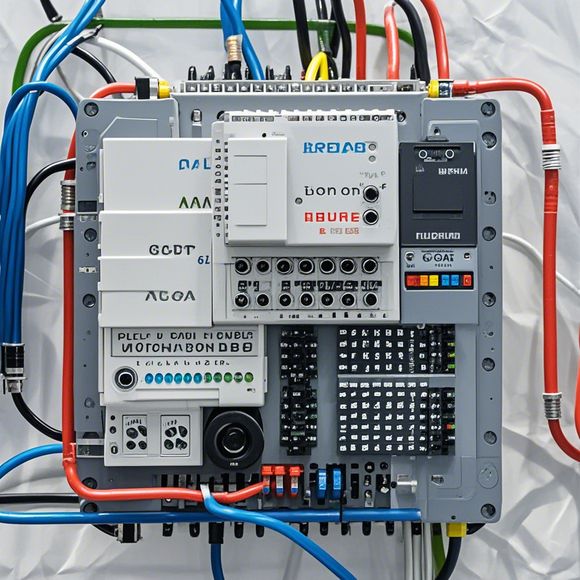PLC Control Cabinet for Automatic Control System
A PLC Control Cabinet is a crucial device in automatic control systems. This cabinet is designed to control the flow of electrical signals within a system, allowing for precise and efficient operation of various components. The cabinet typically contains multiple input/output ports, which are used to connect sensors, actuators, and other devices to the system. Through these inputs, the cabinet can sense data from various sources and output commands to control various devices based on this data. The cabinet is also equipped with a processor that interprets the data from the sensors and determines the most effective way to operate the system. Overall, the PLC Control Cabinet is essential for ensuring that automatic control systems run efficiently and effectively.
1、Introduction to the Importance of PLC Control Cabinets
- PLC (Programmable Logic Controller) cabinets are crucial in modern industrial automation systems. These devices allow for precise and efficient control of complex processes, reducing errors and increasing productivity. They are especially useful in manufacturing, where they can be used to monitor and manage machines, robotics, conveyors, etc.
2、Components of a PLC Control Cabinet

- A basic PLC cabinet typically consists of several key components:
- The PLC processor unit is the brain of the system, controlling all the functions of the cabinet. It can range from simple microprocessors to more complex multi-core CPUs.
- The input/output modules handle communication between the PLC and external devices such as sensors or actuators. They include various types like analog or digital inputs and outputs.
- The power supply provides electricity to the components, ensuring they operate correctly.
- The memory storage holds programming code and settings for each PLC program.
- The user interface allows users to interact with the PLC via screens or keyboards for programming, monitoring, and troubleshooting.
- These components work together to create a complete system capable of performing tasks like temperature control, motion tracking, or inventory management.
3、How PLC Control Cabinets Work
- When an instruction is given by the user through the user interface, the PLC processor interprets it according to predefined rules stored in memory.
- The instructions direct the PLC to perform actions based on its internal logic circuitry. For example, if it detects a temperature sensor reading outside a safe range, it might trigger a safety shutoff mechanism.
- This process repeats automatically, allowing the system to maintain stability over long periods.
- Advanced PLCs may also include features like network connectivity for remote access and monitoring.
4、Benefits of Using PLC Control Cabinets
- Efficiency: PLCs can automate complex systems, leading to significant time savings and reduced labor costs.
- Safety: By monitoring critical parameters and automatically intervening when necessary, they significantly reduce the risk of accidents.
- Scalability: PLC systems can be easily upgraded or modified to accommodate new technologies or changes in production requirements.
- Reliability: With their built-in redundancy and error detection mechanisms, PLCs provide a stable operating environment.

5、Applications of PLC Control Cabinets in Different Industries
- Automotive: In factories producing cars, PLCs are used to control engines, transmissions, and other mechanical parts.
- Manufacturing: In industries that require precision control like electronics or pharmaceuticals, PLCs are essential for managing production lines and quality control processes.
- Industrial Automation: PLCs are widely used in factories to manage production lines, monitor machine performance, and ensure product consistency.
- Health Care: They are used in hospitals to control medical equipment, monitor patient data, and manage workflows.
- Energy: In the energy sector, PLCs are used to control renewable energy systems like solar farms and wind turbines.
6、Future Trends in PLC Control Systems
- The development of IoT (Internet of Things) technology will further integrate PLC systems with smart home appliances, wearable devices, and even self-driving cars.
- The integration of artificial intelligence and machine learning algorithms will enable PLC systems to make better decisions and adapt to changing conditions more efficiently.
- Cloud-based platforms will offer greater flexibility, scalability, and reliability for remote operation and maintenance.
- The use of blockchain technology for secure data exchange and authentication will improve the integrity of the control system.
7、Conclusion
- PLC control cabinets represent a vital component of modern industrial automation. With their ability to automate complex processes, increase efficiency, and ensure safety, they have revolutionized the way we manufacture and operate.
- As technology continues to advance, the future of PLC control cabinets looks bright. They will continue to evolve to meet the needs of a rapidly changing world, making them an essential tool in the hands of industry professionals around the globe.
Content expansion reading:
Articles related to the knowledge points of this article:
PLC Controller for Manufacturing Automation
How to Use a PLC Controller for Your Business
PLC Controllers: A Comprehensive Guide to Understanding Their Prices